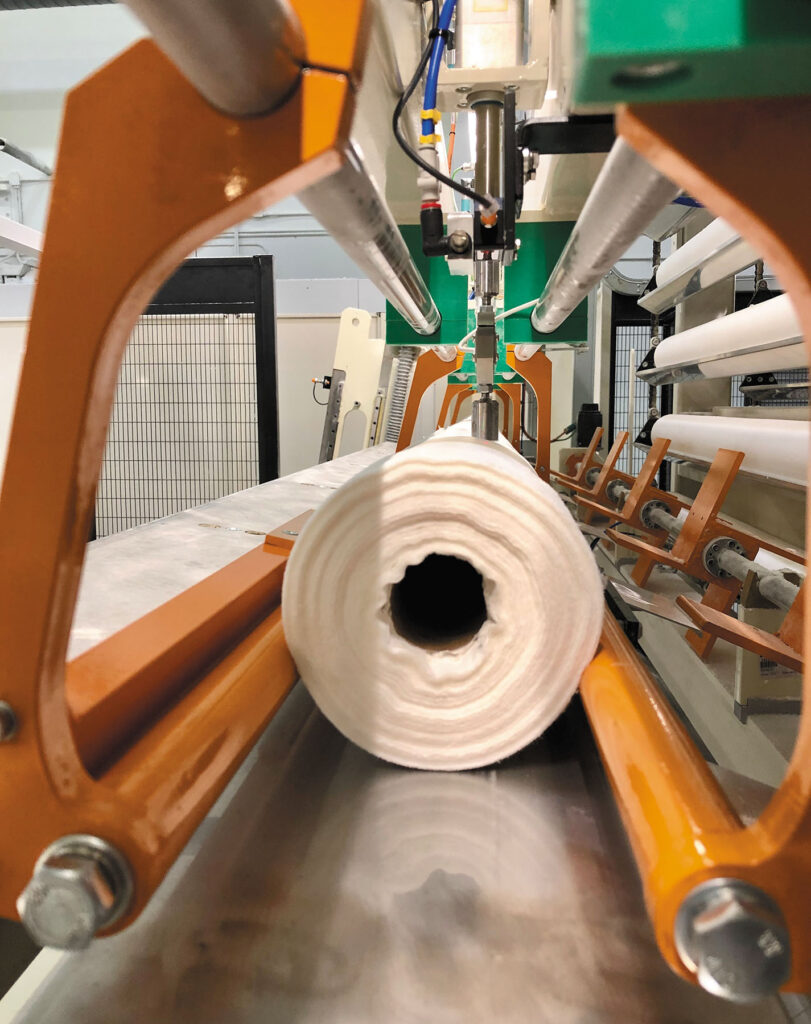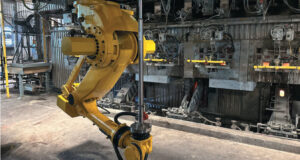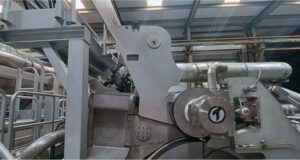CLAUDIO J MUÑOZ
Tissue manufacturers are feeling the pressure of unpredictability. Pulp prices continue to climb. A lack of skilled laborers has put workforces at a deficit. Market volatility caused in part by the collision of these two factors is pressing tissue manufacturers to find solutions, yet so much remains out of their control.
As a tissue industry leader, KÖrber is deeply committed to helping tissue manufacturers overcome the challenges they face with solutions that address current needs and future success.
PULP PRICES, MARKET VOLATILITY,
AND LABOR SHORTAGES
Historically, pulp prices have been fairly constant and manageable. However, in late 2017 pulp stocks hit a 20-year low and demand for uncut paper in certain markets fell dramatically. It should have added up to a dip in pulp prices, yet wood pulp prices increased due to a number of geopolitical, economic, weather, and production factors.
Pulp prices stabilized and even decreased during the first part of 2020, but it was short-lived. The coronavirus changed the global landscape for commodities, upending supply chains, lead times, production, and pulp availability.

Late 2020 and the early months of 2021 saw what some industry experts identify as “the fastest and steepest” price surge in pulp market history.1 On average, bleached eucalyptus kraft (BEK) prices increased 40 percent in 2021 vs. 2020, and northern bleached softwood kraft (NBSK) are about 20 percent higher in the same time period.2
The skilled labor shortage is on a similar trajectory. In the United States, 2.1 million manufacturing jobs are projected to go unfilled by 2030, which will stifle productivity and revenue.
With about 10,000 experienced manufacturing workers retiring daily and taking their knowledge with them, the US economy could lose as much as $1 trillion. The fact that attracting and retaining similarly skilled talent seems out of reach for 77 percent of manufacturing hiring executives could put manufacturers in further peril.3
TISSUE MANUFACTURERS TURN
TO TECHNOLOGY
Tissue manufacturers hold little influence over the future of pulp prices or job fulfillment. Yet, there is work to be done in spite of these obstacles. Finding strategic solutions and alliances is more critical than ever before to remain competitive.
KÖrber has been instrumental in introducing technologies that have helped many tissue manufacturers pivot away from at least some of the sizable impact of spiraling pulp costs and dwindling labor pools.
Strategic use of automation, product differentiation opportunities, and data is defining success in the market. It has also culminated in two progressive KÖrber innovations that address and help eliminate barriers to that success.
WARM-UP CONTACTLESS: A REAL
MARKET REVOLUTION
Tissue manufacturers are routinely challenged with finding ways to save time, energy, and space—especially when it comes to embossing. Traditional hot oil or pressurized water embossing systems require considerable downtime to maintain, consume considerable energy in heating entire steel embossing rolls, and are large and unwieldy to house.
Now, tissue manufacturers have a solution that does away with all of these inefficiencies.
KÖrber Warm-up Contactless is the first patented hot embossing system to use electromagnetic induction heating—a proven method in other sectors such as automotive, but barely used in the tissue industry. Unlike liquid hot embossing systems, induction heating heats the embossing rolls from the outside with no need for physical contact with the rolls themselves.
Further, the Warm-up Contactless system design is more streamlined compared to complex and fragmented configurations where paper is first moistened and then dried. As a result, tissue manufacturers can use less expensive fiber and achieve up to 20 percent greater roll volume, all while maintaining quality and roll firmness. Impressive on its own, this capability also facilitates desheeting without adding cumbersome equipment specification adjustments and minimizes user dissatisfaction with tissue rolls containing fewer sheets.
Induction heating and innovative design are at the heart of what makes Warm-up Contactless effective in offering tissue manufacturers:
• CAPEX Control: Easy retrofitting on existing embossing units without having to replace or modify the existing rolls;
• Efficiency: Shortens roll heating time by 70 percent through heating the embossing roll surface instead of the entire roll, resulting in 60 percent less energy consumption;
• Flexibility: Freedom from piping, modified embossing rolls, and internal heating elements mean faster roll changeovers and greater opportunities for expanding product mix;
• Simplicity: Easy, quick installation that’s 60 percent more efficient than traditional liquid hot embossing systems—no complicated piping and power heater systems to house and maintain, and virtually no embossing roll maintenance;
• Safety: Safer for operators due to elimination of high-temperature liquids, plus less potential for product loss through leakage events.
“The needs of tissue manufacturers must be solved in the context of today’s unpredictable industry climate with technology that is future-focused,” says Pete Augustine, president North America, KÖrber Business Area Tissue. “How quickly Warm-up Contactless is being embraced speaks to the need. We are currently working with a multi-national manufacturer on several installations and anticipate more companies following suit.”
SAM: A VIRTUAL SUPERVISOR ON
TISSUE CONVERTING LINES
The manufacturing sector is particularly hard hit by skilled labor shortfalls. Nearly 80 percent of manufacturers anticipate ongoing labor challenges in the short and long term.4
Technology is increasingly sought after to find ways to work around reliance on human intervention in work environments.
KÖrber responded with the Sam Operational Solution that leverages sensor technology to measure and monitor product and equipment performance.
Placed at critical points throughout the various process steps along the tissue converting line, these sensors automatically detect deviations—proactivity that prevents quality issues and waste.
The entire Sam Operational Solution family works holistically to maximize operator efficiency and reduce risk through data-driven decision making and correction. Targeting numerous segments of a tissue converting line from one human-machine interface (HMI) panel allows manufacturers to gather and apply data that improves performance, quality, and consistency:
• Sam Log seamlessly pulls and measures key log characteristics including diameter, firmness, and weight without the need for physical sampling or operators entering the machine. Data gathered is immediately applied to control certain parts of the machine.
• Sam Perf detects the correct approach of perforation blades and monitors for blade wear in order to prevent cutting defects. Perforation is a difficult attribute to control and issues can lead to costly production re-runs and customer dissatisfaction without the aid of precision technology.
• Sam Caliper automatically measures tissue thickness before and after embossing without having to shut down equipment, interrupt production, or wait for manual data input to make critical adjustments.
“Every critical point in the tissue converting process has the potential to contribute to optimal product quality and improved OEE,” Augustine explains. “The Sam operational solution sensors provide an omniscience that keeps costly errors from occurring, such as producing large volumes of out-of-specification products. The quality assurance monitoring process is faster and requires fewer people to ensure accuracy. It’s a win-win for tissue manufacturers.”
There is no way to predict when—or if—uncertainty surrounding pulp prices and labor shortfalls will end. Tissue manufacturers must remain proactive instead of reactive. Using technologies like KÖrber Warm-up Contactless and Sam Operational Solution leverage automation, product differentiation opportunities, and data to redefine the future.
SOURCES:
1. FastMarkets, Pulp price volatility: Seven things you need to know, May 13, 2021
2. Moody’s: Forest products sector outlook remains positive for 2021
3. Deloitte, US Manufacturing Skills Gap Could Leave As Many As 2.1 Million Jobs Unfilled By 2030, Deloitte and The Manufacturing Institute Study Finds—Press release, May 4, 2021
4. Industry Week, The Perfect Storm for the Manufacturing Workforce, June 2019
Claudio J Muñoz is director marketing Americas, KÖrber Business Area Tissue.
 Paper 360
Paper 360

